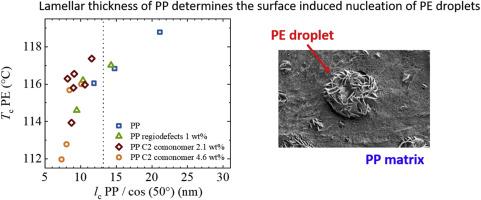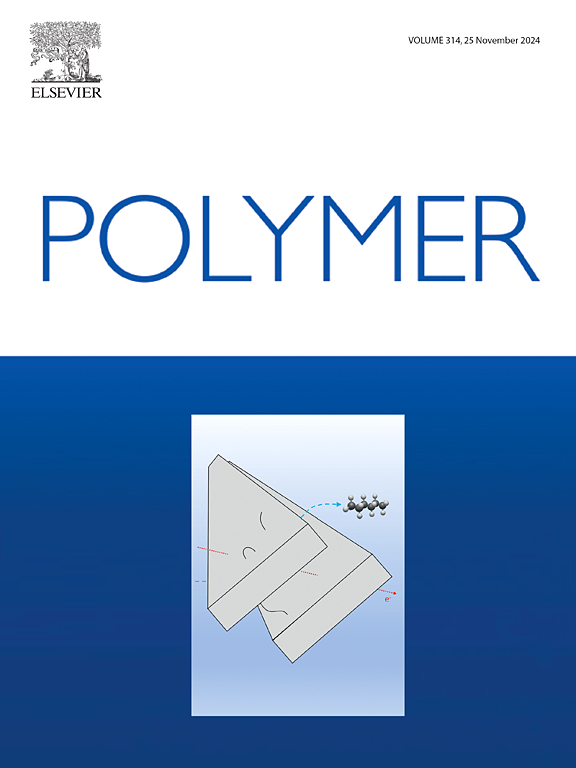Lamellar thickness of the polypropylene matrix determines surface induced nucleation of polyethylene droplets in immiscible blends
IF 4.1
2区 化学
Q2 POLYMER SCIENCE
引用次数: 0
Abstract
Polyethylene (PE)/polypropylene (PP) blends have attracted much attention since they offer interesting physical properties, including intriguing crystallization behaviour. When PE minority phase is dispersed as droplet in PP matrix, we have recently proved that PP can induce surface induced nucleation of polyethylene. This occurs due to epitaxy, and is detected by measuring an increase of PE crystallization temperature upon varying the crystallization temperature of PP via self-nucleation. However, so far the role of the microstructure of PP substrate on this peculiar nucleation process has not been addressed. To gain insights on this issue PP with varying content of 2,1- erythro regiodefects or ethylene comonomer has been employed to tune the microstructure of the blend’s matrix. Surface induced nucleation is investigated upon modifying the PP matrix morphology via self-nucleation. The modification of the nanoscale morphology of the matrix has been analysed with Small Angle X-ray Scattering (SAXS), allowing to determine the crystalline lamellar thickness. The increase in the crystallization temperature of PP matrix results in a thickening of the lamellae, which in turns enhances the surface induced nucleation of PE phase, as reflected by an increase in the crystallization temperature of PE. A clear correlation between the crystallization temperature of PE and the crystalline lamellar thickness of PP is found. In general, nucleation of PE is promoted by thicker PP lamellae, but surprisingly it can also occur (with lower efficiency) on PP lamellae that are thinner than the average lamellar thickness of the nucleating PE.

求助全文
约1分钟内获得全文
求助全文
来源期刊

Polymer
化学-高分子科学
CiteScore
7.90
自引率
8.70%
发文量
959
审稿时长
32 days
期刊介绍:
Polymer is an interdisciplinary journal dedicated to publishing innovative and significant advances in Polymer Physics, Chemistry and Technology. We welcome submissions on polymer hybrids, nanocomposites, characterisation and self-assembly. Polymer also publishes work on the technological application of polymers in energy and optoelectronics.
The main scope is covered but not limited to the following core areas:
Polymer Materials
Nanocomposites and hybrid nanomaterials
Polymer blends, films, fibres, networks and porous materials
Physical Characterization
Characterisation, modelling and simulation* of molecular and materials properties in bulk, solution, and thin films
Polymer Engineering
Advanced multiscale processing methods
Polymer Synthesis, Modification and Self-assembly
Including designer polymer architectures, mechanisms and kinetics, and supramolecular polymerization
Technological Applications
Polymers for energy generation and storage
Polymer membranes for separation technology
Polymers for opto- and microelectronics.
 求助内容:
求助内容: 应助结果提醒方式:
应助结果提醒方式:


